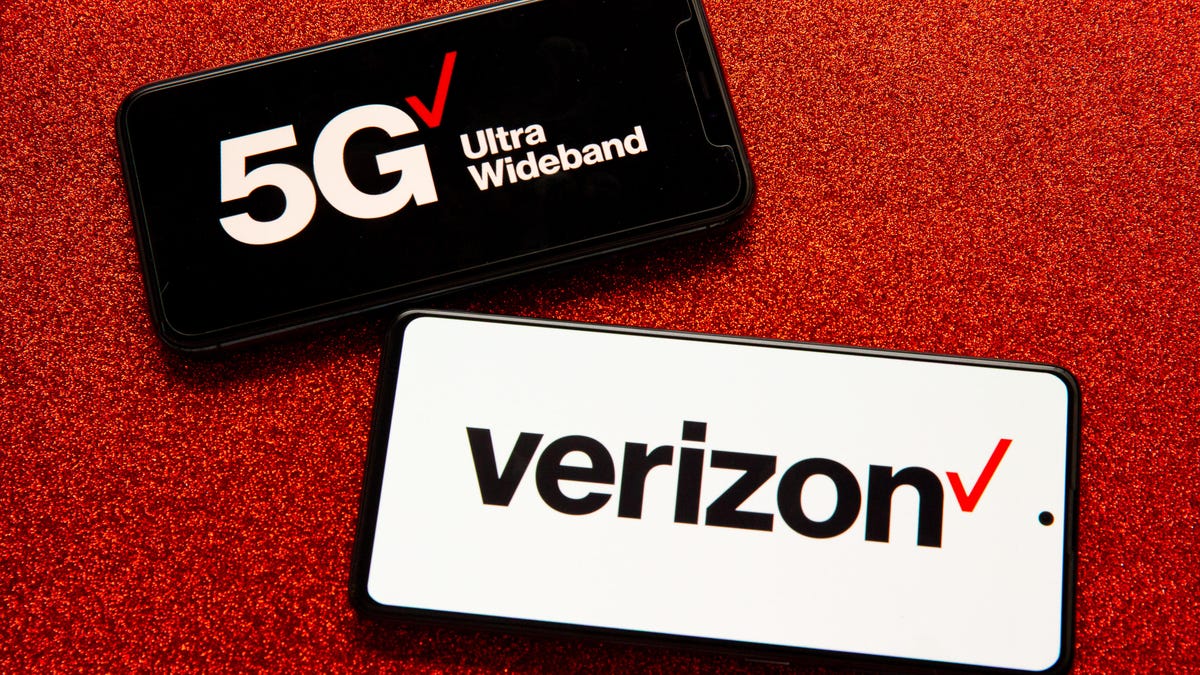Verizon says a third of its customers are on 5G phones
The info comes as the carrier posts fourth-quarter results that topped expectations.

Verizon revealed during its fourth-quarter earnings call Tuesday that one in three of its wireless customers now uses a 5G phone as its 5G network continues to expand.
The largest carrier in the US got more of its customers to upgrade to 5G phones, which means converting them to pricier Unlimited plans required to access the 5G network that Verizon has recently enlarged despite friction with the Federal Aviation Administration. Getting more customers on 5G means having more of them take advantage of that expanded network.
In the period, Verizon pushed aggressive deals and discounts to encourage customers to buy new 5G-capable phones like the iPhone 13 series, resulting in more customers signing up for long-term contracts. Verizon added a net 667,000 wireless retail postpaid customers in the quarter, a key metric for dependable profits among carriers. Of those, 336,000 were phone net additions, with 369,000 other connected device additions, offset by 38,000 tablet net losses.
And in a small coup for Verizon's home internet division, fixed wireless internet grew faster than wired for the first time, with fixed wireless adding 78,000 net additions, compared with 51,000 Fios Internet net additions. This will be augmented by the so-called C-band 5G radio airwaves that Verizon switched on days before the earnings call.
C-band fits between Verizon's existing low-band and millimeter wave 5G, a sort of middle-ground frequency that adds more capacity and coverage, though the company voluntarily limited its new 5G signal in certain areas for six months. The carrier, along with AT&T, conceded to last-minute FAA demands to ban service around airports while the agency investigates the new frequencies' potential interference with flight equipment. Still, the majority of Verizon's C-band started going live as planned on Jan. 19.
"We have the highest assurance from the White House that this will be resolved soon," Verizon CEO Hans Vestberg said on the earnings call. "Clearly we want this to be resolved as soon as possible."
The carrier also introduced 5G coverage maps that outline areas for 5G Ultra Wideband availability, which includes C-band and mmWave service, as well as low-band 5G Nationwide and 4G LTE. The maps also indicate C-band exclusion zones around airports, as well as Verizon retail locations.
Verizon reported adjusted earnings per share of $1.31 on revenue of $14.6 billion, a 7.7% increase year over year. Analysts polled by Yahoo Finance expected an average earnings per share of $1.29, up from $1.21 last year; the projection anticipates an increase to $1.31 for the first quarter of this year.
Verizon's fourth-quarter revenue of $34.1 billion was down 1.8% from a year earlier, but that was offset by the sale of Verizon Media and the acquisition of Tracfone Wireless, representing the carrier's business refocus on wireless customers over media content.
Verizon's FAA friction
Verizon planned to use C-band frequencies between 3.7GHz and 3.98GHz to augment its 5G network, which already consisted of low-band 800MHz that offer speeds slightly better than 4G and millimeter wave, or mmWave, above 28GHz with speeds that peak over 1Gbps.
The FAA and the aviation industry, however, raised concerns that the new frequencies may interfere with equipment – namely altimeters operating in the 4.2GHz to 4.4GHz frequencies, which are used by aircraft to land in adverse weather conditions. The frequencies come relatively close to each other, sparking fears of potential risks for pilots using those altimeters to land in conditions where they can't see.
In response, the carriers delayed their C-band rollouts for a month until early January, but a last-minute complaint by the FAA regarding potentially dangerous interference led to another delay until Jan. 19. Yet another complaint by the agency, as well as pushback from airlines, led Verizon and AT&T to restrict C-band service around airports for six months, during which time the FAA plans to check and verify that altimeters and other equipment used by modern aircraft won't be adversely affected by C-band 5G.
"At our sole discretion we have voluntarily agreed to temporarily defer turning on a limited number of towers around certain airport runways as we continue to work with the aviation industry and the [Federal Aviation Administration] to provide further information about our 5G deployment, since they have not utilized the two years they've had to responsibly plan for this deployment," an AT&T spokesperson told CNET in a statement last week.
"We are frustrated by the FAA's inability to do what nearly 40 countries have done, which is to safely deploy 5G technology without disrupting aviation services, and we urge it to do so in a timely manner," the statement continued. "We are launching our advanced 5G services everywhere else as planned with the temporary exception of this limited number of towers."
The Federal Communications Commission which auctioned off the C-band frequencies to carriers disagrees with the FAA's conclusions about potential interference with aircraft equipment. In a statement made on Jan. 18 before Verizon and AT&T's C-band coverage went live, FCC chairwoman Jessica Rosenworcel said she is confident that 5G "deployment can safely co-exist with aviation technologies in the United States, just as it does in other countries around the world."
The FAA has continued testing altimeters, and cleared 90% of the US commercial fleet, including airliners from Boeing, Airbus, Embraer, older McDonnel Douglas craft, and others listed on the agency's website.

